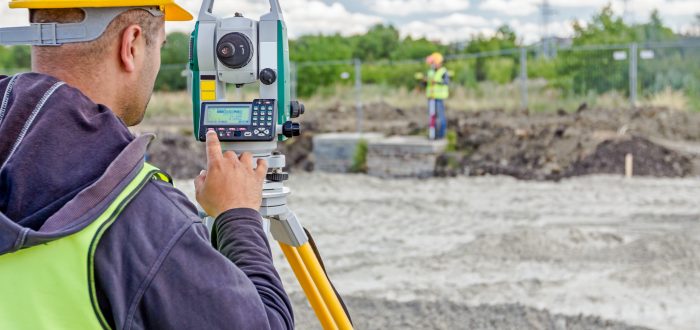For land developers, projects such as creating a subdivision require an enormous amount of planning. From finding and purchasing your land to the approvals and regulations you’ll need to manage along the way, there’s much to be done. While this is by no means a comprehensive guide, we hope that simplifying the planning process down into its basics in a single blog post will help. Perhaps it can make the work seem less overwhelming. And we hope it serves, too, as a reminder that land surveying services will be a crucial part of the subdivision planning process. We’ll be here when you need us.
Find & Investigate the Property
Your land development begins with the land itself. As you locate a property you’re interested in, there will be many assessments to make. The physical location and features of the land are of top importance in its suitability for a subdivision. Check condition of soil, examine potential for flooding, and identify other geological features of note. Legal attachments such as zoning laws must be considered, as well as the location of utilities and if extensions will be required. These are some of the most basic items to focus on, but they are necessities for everything else in your subdivision process.
It’s also vital to consider the property’s purpose and attraction potential. If you’re considering developing a residential subdivision, you should pay attention to the immediate area and the impact it has on potential residents’ day-to-day lives. Are there unsightly views of structures nearby that will make selling homes a challenge? Is there excessive noise from the adjacent motorway? How is the air quality? These things and more will impact the money-making potential of your subdivision.
Discern the Property’s Potential
Before making a purchase of land, you will need to find out everything about the property. Check the previous legal information, land deeds, and survey data which exists. This is often when a new identification survey is needed, especially if existing survey material is outdated or missing crucial elements.
This stage is when you are also beginning to plan. Now is the time to discern what major steps will need to be taken: both the physical work required to ready the land for development and construction, and the applications and permits that will have to be sorted.
Assess Development & Construction Costs
Moving forward with your land development project, you have likely purchased the land at this stage. While preliminary budgets and cost analysis will already have been completed, it is at this point that your comprehensive financials should be examined. In addition to calculating costs for the various steps of the process, you will be looking at budgeting for the unexpected costs of delays, development issues, obtaining permits, etc.
Develop a Site Plan & Outline the Construction Process
Now for the fun part: the actual development process. If you’re only subdividing and reselling plots of land, your process will be different. But if you’re a home builder or other developer looking for finished builds, the process continues towards construction.
Your professional land surveyor is going to be needed in the beginning stages here, and throughout the process as well, to ensure development is continuing in line with relevant surveying data. At Leslie & Thompson, our highly advanced technology allows us to complete site surveys with incredible accuracy. This information will inform your every decision in the land development process.
We can do more than just the surveying, too. Our team will prepare the Development Application for lodging with Council as well as arrange for any associated specialist reports. Once this has received approval, we’ll manage the final pegging of the land and prepare the subdivision plan for submission to Land & Property Information.
Ready to plan your subdivision with the best on your side? Call our team of expert surveyors at Leslie & Thompson and see what a difference we can make.

